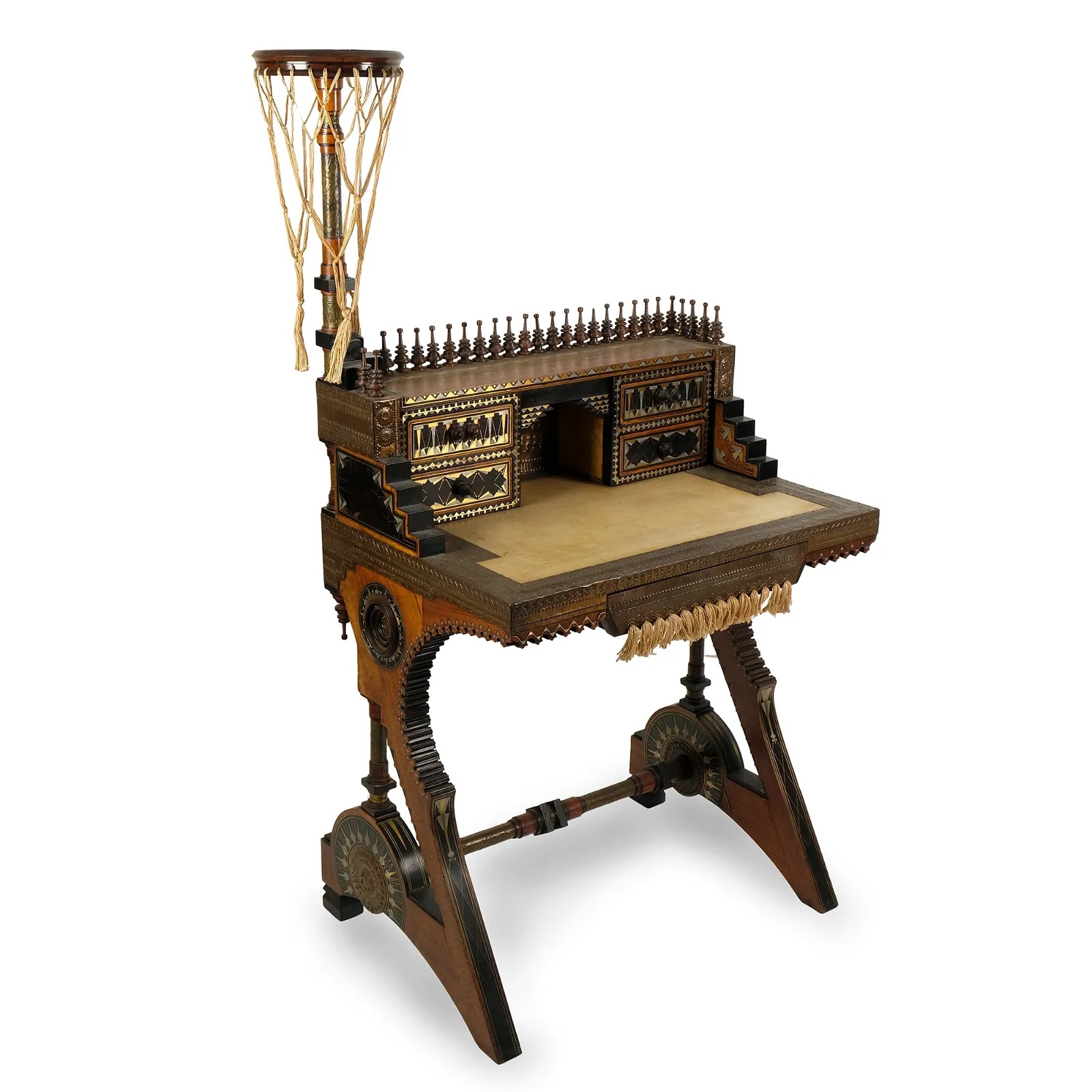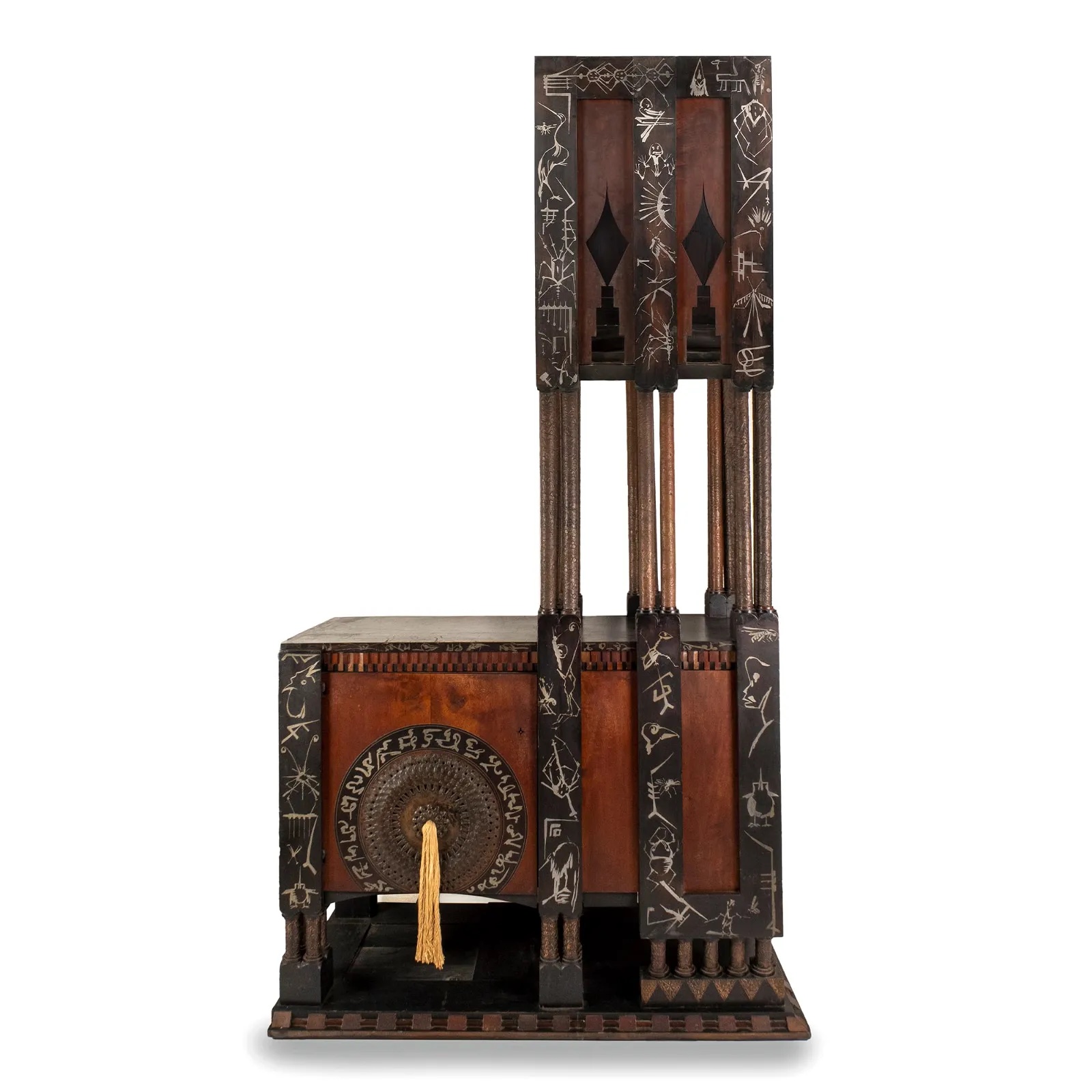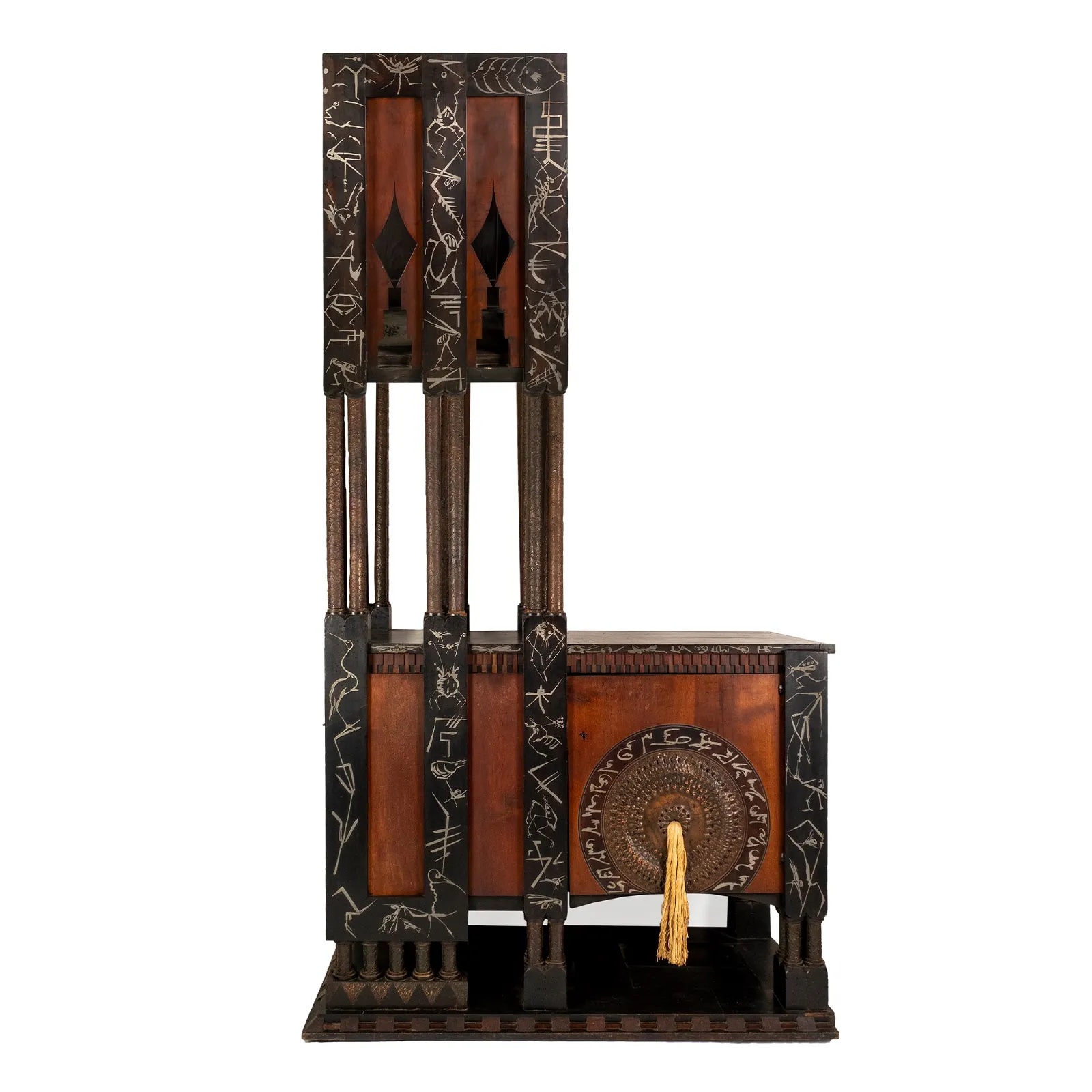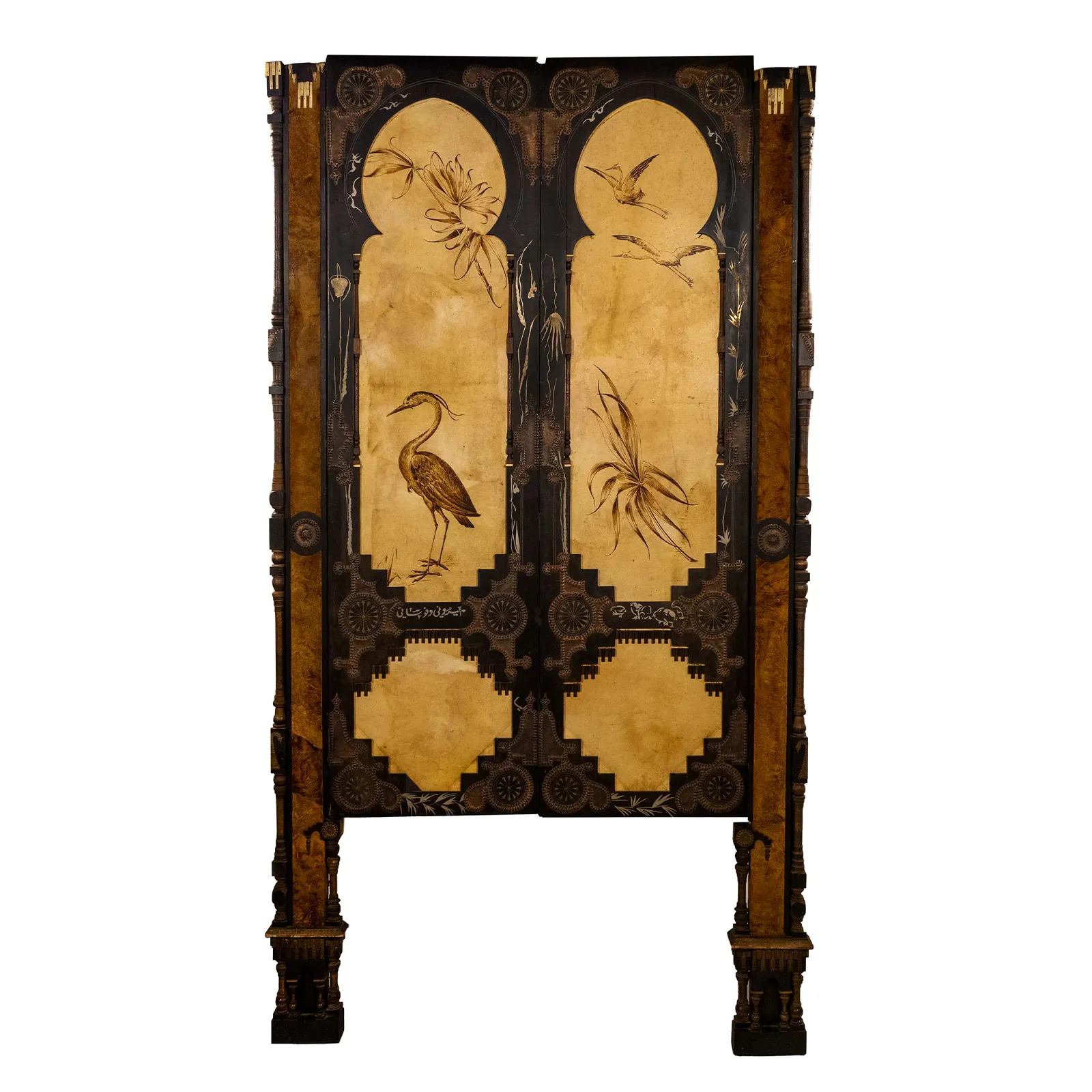ROME — In 1902, while visiting stands at the Esposizione Internationale d’Arte Decorativa Moderna in Turin, the queen of Italy congratulated Carlo Bugatti on his ‘Moresque’ style of furniture. He reportedly replied, “You are mistaken, majesty, this style is mine!”
Bugatti (1856-1940) was undoubtedly a product of 19th-century European Orientalism, and his ideas were much inspired by Moorish, Islamic, and Japanese design. But he did have a voice all his own and considered himself outside the prevailing artistic movements of the day. He called his business Bugatti & C., Fabbrica Mobili Artistici Fantasia (C. Bugatti & Co., Artistic Fantasies Furniture Factory).
A dozen examples of Bugatti’s extraordinary furniture designs were offered by Bolli & Romiti in Rome on February 7. All 12 lots sold, with prices ranging from €4,500 ($4,870) to €15,000 ($16,240).
At the high end of the price range was a pair of two-piece ebonized cabinets (here and here), each measuring 8ft 4in tall by 4ft 10in wide (2.82 by 1.46m). The pewter inlays inspired by hieroglyphics were achieved by carving the designs into the wood and then filling them with molten white metal. Offered as separate lots, they went to the same buyer at €15,000 each ($16,240 or $21,110 with buyer’s premium).
Very few Bugatti pieces can be firmly dated. While the first visual documentation of his work emerges in 1888 (nine of his furnishings were illustrated in Queen, The Lady’s Newspaper as part of the Italian Exhibition in Earls Court, London), most pieces are dated to circa 1900. Similarly, as little documentation appears to have survived, it is unknown how many pieces were made.
A particularly scarce form sold at Bolli & Romiti at €11,000 ($11,910, or $15,480 with buyer’s premium) was a large mirror measuring 8ft across by 4ft 1in high. It displays many typical Bugatti characteristics: the union of lacquered wood, vellum decorated in a soft brown wash, strips of beaten copper, and fabric fringes and tassels. The use of asymmetry in the design is something Bugatti took from Japonism.
Sold to a LiveAuctioneers bidder at €9,000 ($9,745, or $12,665 with buyer’s premium) was a kneehole writing desk with a bank of four drawers. Inlaid with partially gilt pewter and bone and covered to the top in parchment, it had a candle stand with a rope fringe.
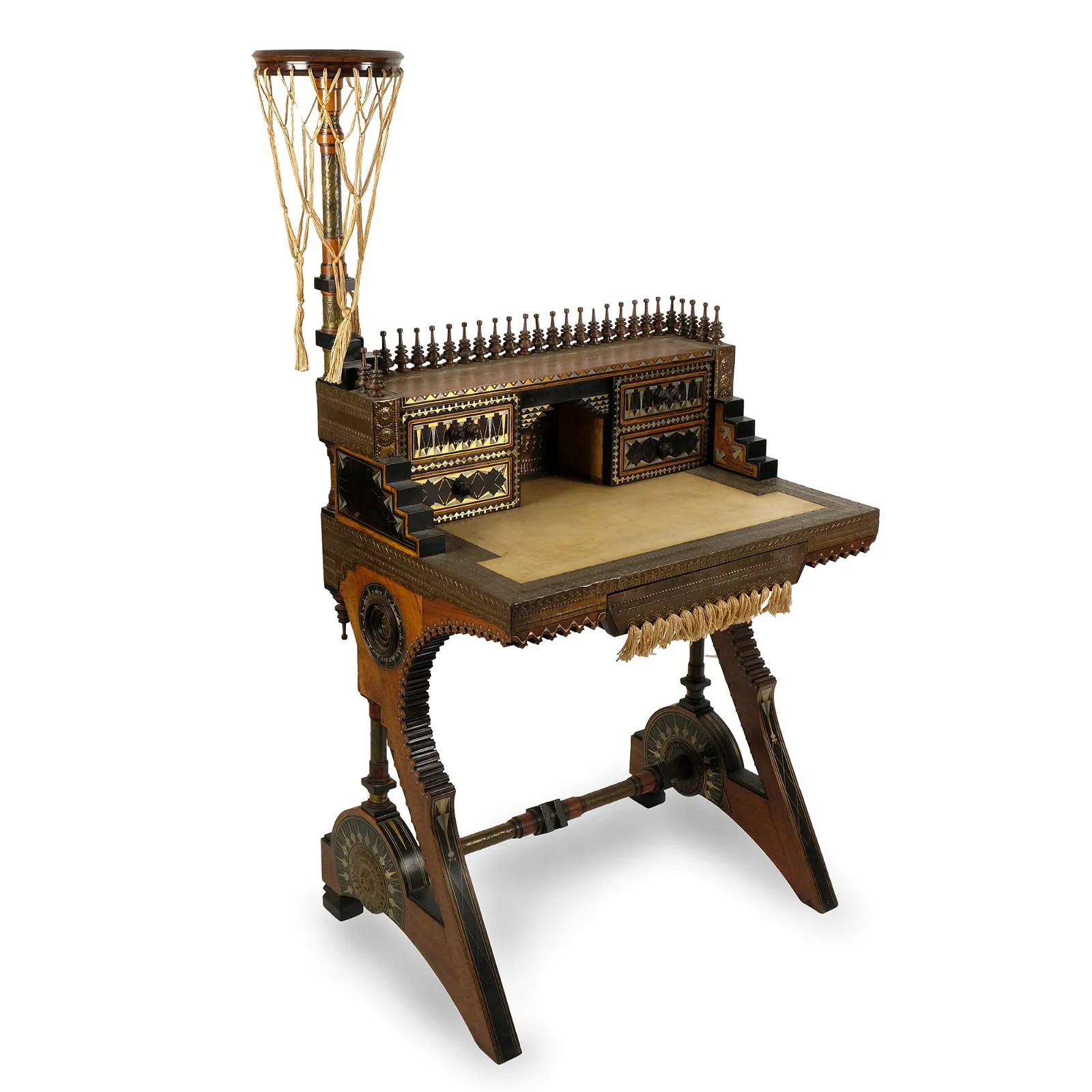
Carlo Bugatti kneehole writing desk, which sold for €9,000 ($9,745, or $12,665 with buyer’s premium) at Bolli & Romiti.
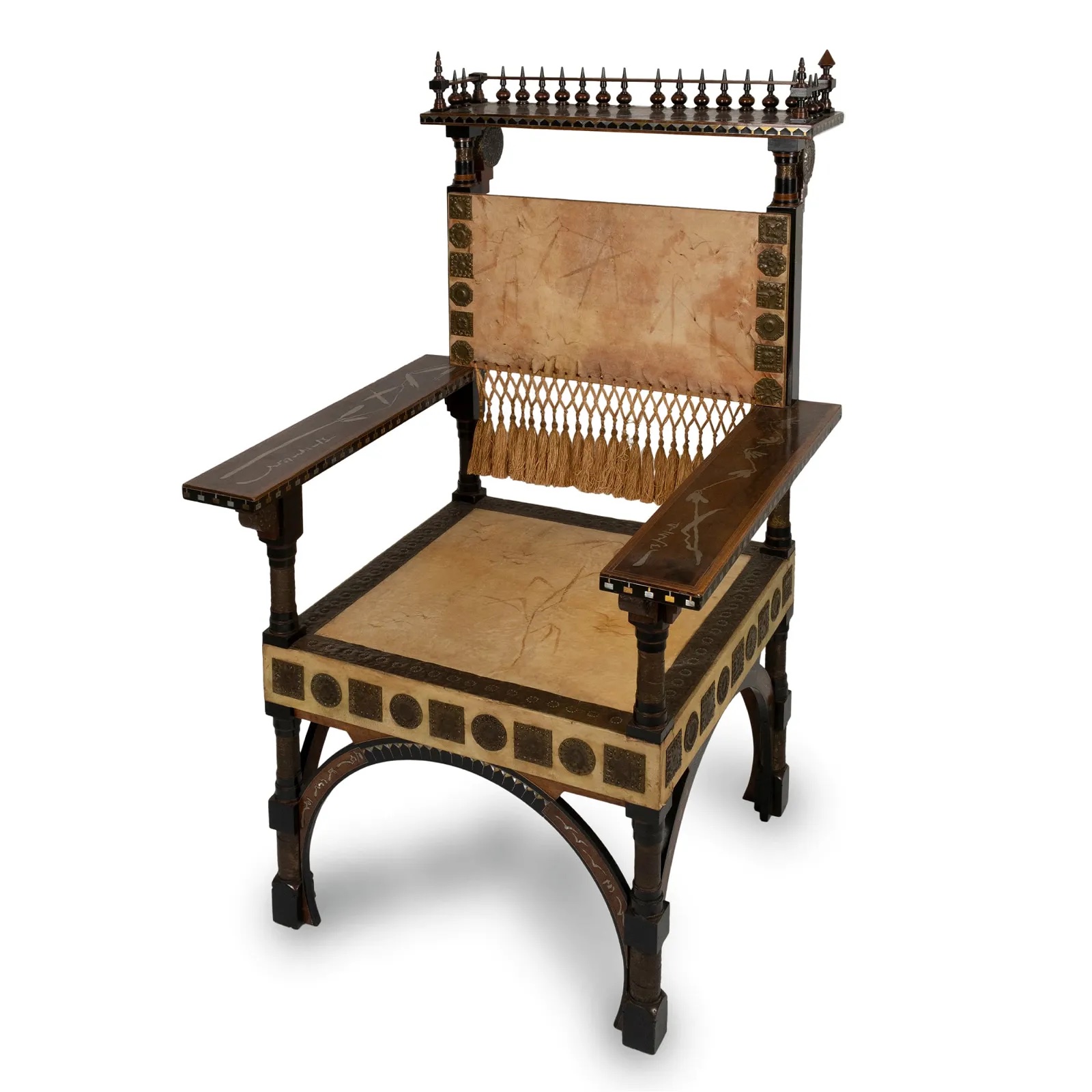
Armchair by Carlo Bugatti, which sold for €6,800 ($7,360, or $9,570 with buyer's premium) at Bolli & Romiti.
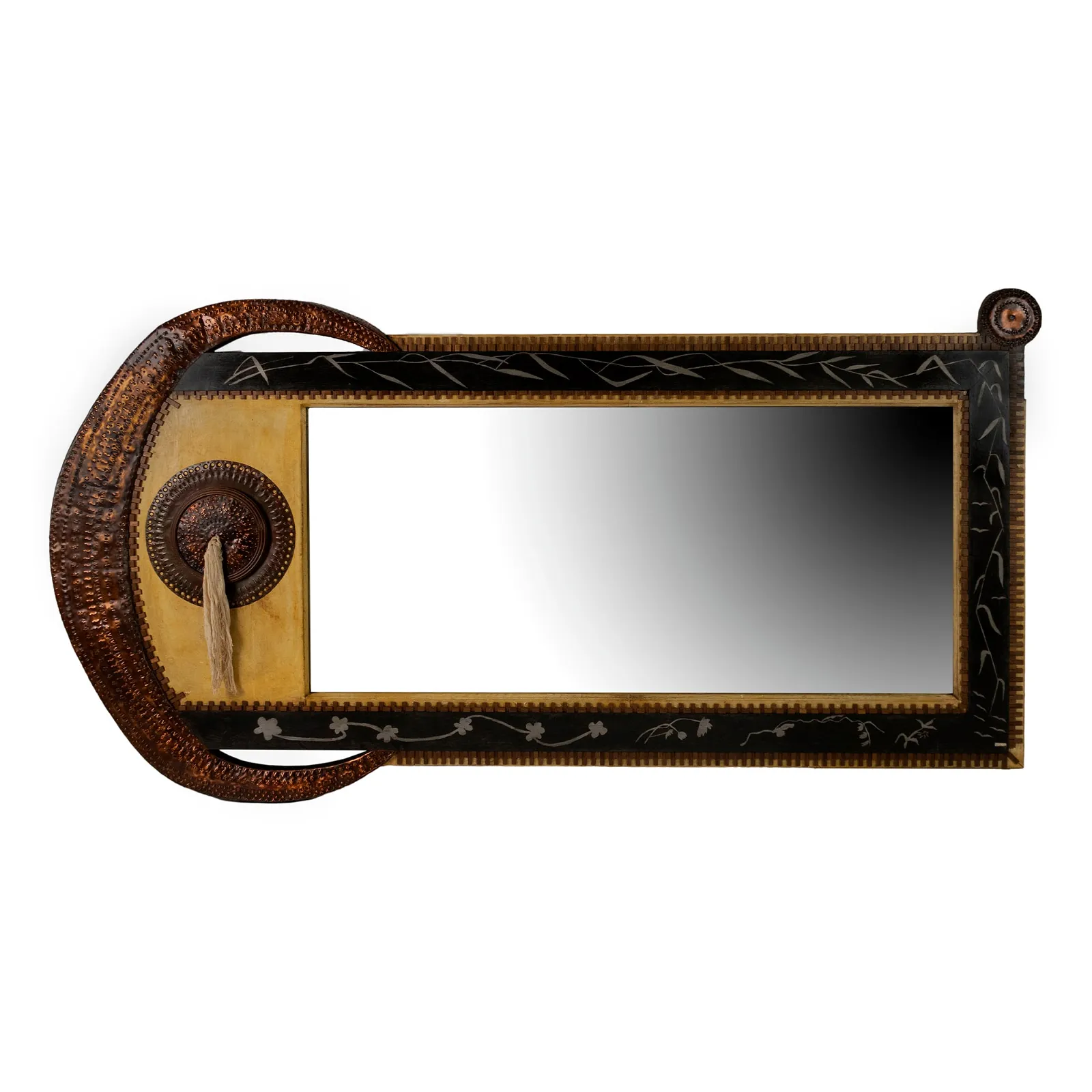
Large mirror by Carlo Bugatti, which sold for €11,000 ($11,910, or $15,480 with buyer’s premium) at Bolli & Romiti.
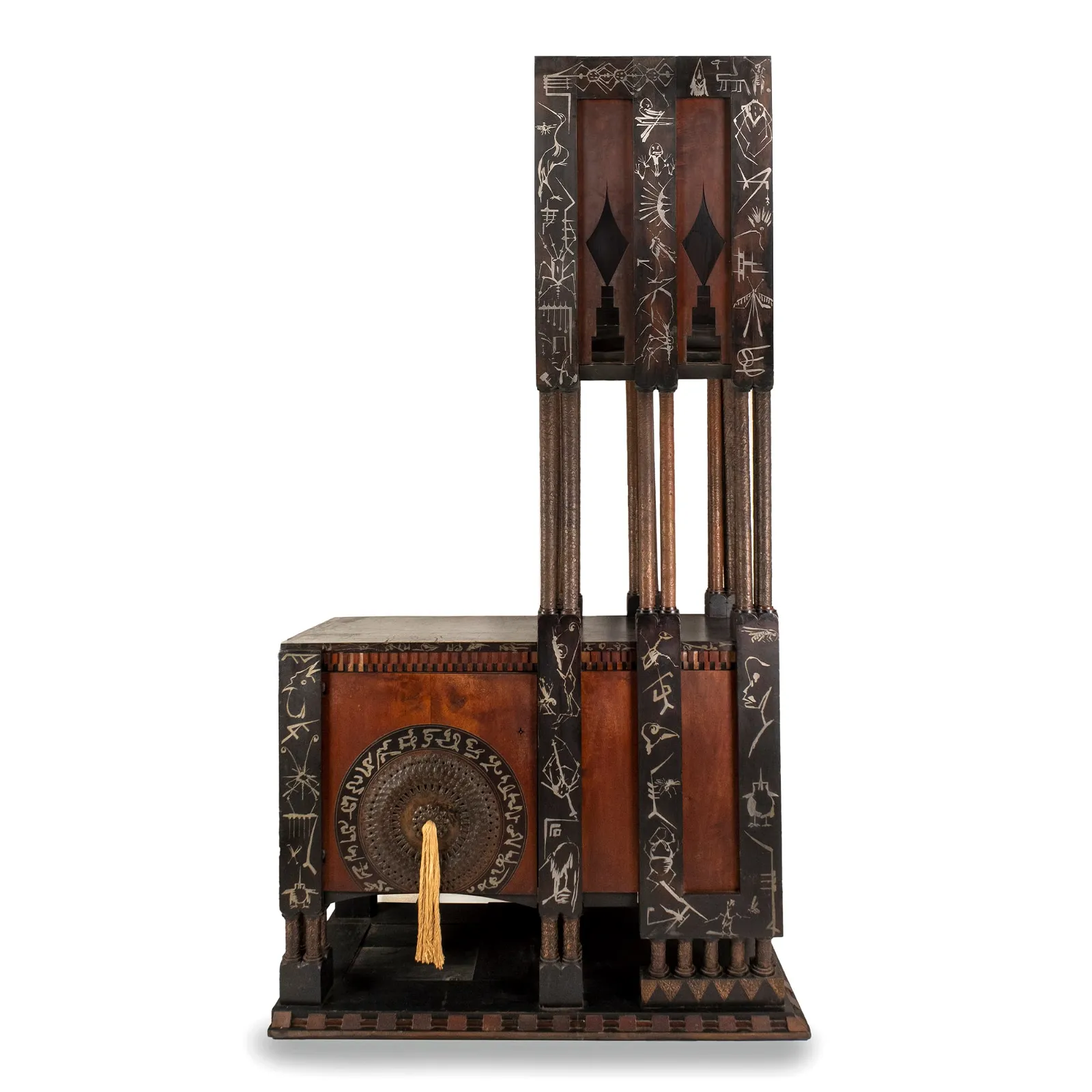
Two-piece ebonized cabinet by Carlo Bugatti, which sold for €15,000 ($16,240, or $21,110 with buyer’s premium) at Bolli & Romiti.


